.
Citrus hybrids: varieties.
Oranges: varieties for the home.
Grapefruits: varieties for the home.
Gardeners gardeners
website, 2000-2017 - an online resource about home and family. About indoor plants, landscape design, soap making, permaculture, natural agriculture, about gardens, growing plants and flowers, about natural gemstones, high-quality home goods, good books. Personal experience of people living outside the city, reviews and recommendations.
Heavy thunder is approaching. It rattles and flares, the winds of rain and winds. He plays with the tops of strong trees. Birch also bends, it is very elastic. Even fun to ride back and forth. Thunderstorm is above them. A strong branch falls on a small birch. When the storm is ruined, the beech asks: Oak, how hard does it hurt you?
Oak has great pain, but it will survive. She lost only one branch. A deep wound will heal. “What about the little birch?” Asks the oak. The big branch completely covers them. "We have to find someone to see if she can survive." - says oak. We had so much fun, it should not end. We will ask the hare for help when he comes.
June 23, 2007
Birch - the tree of life
For a long time, birch has been especially honored and respected in Russia. This is due not only to the fact that the white-trunked forest beauty has become a kind of symbol of spring, light, love for the motherland, but also with its numerous healing properties. It is not by chance that birch is called the tree of life and health.
The composition of plant materials and beneficial properties of birch
The affiliate did more damage. Squirrel family without housing, she had her own cave in the branch. Squirrels must look for a new apartment before winter. No one can tell the oak what happened to the little birch. The hare has no time, it must prepare for winter. Trees also lose their leaves. Everything is ready for winter.
When the oak branch broke, a large hole formed in the forest. Through this hole, the sun can now look exactly on a small birch. The sun rays tickle the birch at the point of the branches that are under the oak branch. Only the sun noticed that the birch was only bent, but not damaged. It must deal only with the load of the branch. Maybe someone can remove it. Now comes the winter, the rest is for nature.
BIRCH grows in many countries. In Russia, birch groves occupy the third place in terms of their distribution after pine and deciduous forests.
Few people know that besides the traditional white color of birch bark, it can be yellow, pink, and bright orange, and dark purple, and black.
In general, there are about 120 species of birch, 64 of which are found in Russia. The life span of a tree does not exceed 120 years, with the exception of the so-called iron birch, which sometimes falls short of 400 years.
Snow puts a white blanket on the forest floor. In spring, life will return to the trees. However, in a non-indigenous forest something happens in winter. It develops from small mushroom spores, corresponding to the mushroom braids that grow around the roots of trees. Mushrooms live in trees, but also in trees. When it rains, mushrooms store water and release it in dry times to the tree. The fungus receives dead tree roots and minerals from tree to life. Well, when a tree has a mushroom as a roommate. There are a lot of different mushrooms.
Therefore, mushrooms specialize. Birch fungus belongs to birch, stone mushroom to barely or pine, and the lip of a goat belongs to larch. In this beautiful forest there are a lot of different trees, as well as different mushrooms. The variety of species in this forest is unique. It is finally back in the spring. She first shoved her green leaf tips. She survived the winter well, despite the heavy load of the large branch still lying on her. He pushes new flyers, hints can already be discovered.
Practically everything that a birch can give — bark, buds, leaves, birch sap, and even birch fungus (chaga) in the form of ugly growths on the trunk — is used in traditional medicine.
Birch buds can be collected from January, but young buds have the strongest effect on the body. Birch buds are usually harvested in March-April, when they have already swelled, but have not yet begun to grow.
Birch made her as big as an oak. It now has only one other way to achieve this goal. Now the birch should grow around the branch. She will do it because she is a fighter. Only then does she notice that the mushrooms are holding on to its roots. She does not know that he needs only good things. Birch is afraid that it can not withstand the load. The mushroom calms the birch and tells her everything. From now on he is her best friend. They will live together for many years if there is no accident.
Oak and beech are also awakened from winter holidays. They look forward to meeting the birch. Now the birch looks very small. He lacks a solid piece at a height compared with the previous year. A large branch prevents the rapid growth of birch, but it does not give up. Now your tribe gets a bend. Other birches are pretty straight and look very elegant with their white chest. On some days, a small birch is even angry at the branch that lies on it. But then she sees what is happening with her bent tribe.
Birch buds contain essential oil, ascorbic acid, flavonoids, resins, tannins, bitterness, grape sugar. They are used in diseases of the respiratory system (laryngitis, tracheitis, bronchitis) as an antiseptic and expectorant. Birch buds are used as an anti-inflammatory agent, adding to hygienic baths or using lotions and dressings for minor wounds and soft tissue industrial injuries, as well as for bedsores, chronic purulent wounds, trophic ulcers and non-healing wounds.
She is pleased with herself and her fate. Because of the bend of the trunk and the branch, a small cave was built, which some guests use as protection against rain. For birch, there is always diversity in their lives. Fox discovered a small cave. When he comes from his wanderings through the forest, he falls asleep in the shelter of a birch cave. Little birch is really important. However, the fox has a real building as an apartment. He always lies on the birch tree before he goes home. He has a companion with many strong boys, so you need a rest.
Birch buds can be used to prepare an infusion that will help organize the work of the gastrointestinal tract, useful for skin diseases, edema caused by renal or heart failure. To do this, take 1 tablespoon of the kidneys, pour 250 ml of cold water over them and insist on a water bath for 20-30 minutes, then cool and strain. Take an infusion of 1 tablespoon 4-6 times a day.
The sun watches the birch as it develops. Birch likes the sun, it is beautifully warm. Birch grows every year. She is approaching and approaching caliber. When the wind plays with the treetops again, the birch can touch the oak with its branches. She likes to weigh herself up with the wind. Through the wind, she feels that she has a big tree crown. Birch has only more mobile branches than other trees. She will never have such a powerful tree crown as oak.
Oak is already an old tree. She is happy when the birch touches her and wants to play with her. Oak can tell birch most of its life. She talks about her youth when she wanted to grow as fast as birch. It's nice that the birch did not give up when a large branch fell on it. Beech and oak have a lot of fun with birch. Birch can always tell them new events from the birch cave. This is an exciting thing, because something new often happens there.
At home, you can make a tincture of birch buds. It will help with spastic states of the stomach, with fatigue and insomnia, facilitate the menopausal period. To do this, you need to pour 15-20 grams of birch buds 0.5 liters of alcohol, insist and take 15-20 drops daily 2-3 times a day. This tincture can be used externally for rubbing and compressing the joints for arthritis and rheumatism.
Types of birch trees, names and photos
In the birch cave there is also a hedgehog. It is there for the winter. This is easy because there are leaves around many laurels. Hedgehog pours into its newly acquired foliage. He wants to try everything in the right place. Fox wants a break from his family again. But he lies precisely on the hedgehog. With a hedgehog, he does not want to put himself, he has too many thorns. Fox comes out of the dust. He can no longer use the cave for recreation.
Birch wart leaf
The branch that obstructs the birch is slowly weathered. Some species of beetles and other insects nest in this branch. Nature leaves nothing unused, everything is necessary. It takes a long time until such a large branch disappears. Now the time has come, the big branch is so rotten that it breaks. The branch falls to the ground and can be further exploited by insects and other animals and plants. Even a birch mushroom comes from a branch. Dead parts of the tree are precious food for birch fungus.
As an antiemetic, water infusion of birch buds is used. 1 tablespoon of dried buds is poured with a glass of boiling water, infused for 30 minutes, filtered and take 30-50 grams every hour.
In early spring, in late March - early April, the process of rapid sap flow begins. It is very important not to miss this period (it lasts no more than 10 days) and if you do not prepare it for the future, then at least drink plenty of birch sap.
He feels so good that he is driving mushrooms. Fungal fruits look almost birch. On a white stalk - black peas. Everyone sees why a mushroom in the ground is called a birch mushroom. The fruits camouflage themselves, they have spurs for the next generation of mushrooms in their heads. If the spores fall out, are carried away by wind or rain, a new fungus develops. But only when a small birch lives with a mushroom does it succeed. It takes many years, until the fungus itself does not grow mushroom fruits.
The mushroom of our birch also had to grow over the years. Birch helped him, and she received support from the fungus when it was necessary for her. Only now you can see how the birch had to grow through a heavy branch. It has a curvature that is not repaired. Now birch for many years, it is not much more. Even trees once grow with growth.
It contains many beneficial substances for the body, vitamins, organic acids, proteins and trace elements.
Birch sap has a rejuvenating effect, stimulates the metabolism, destroys urinary stones mainly of phosphate and carbonate origin, is used as an antihelminthic. It is used for intoxication and cancer.
Useful properties of birch
The curvature of the birch is not as large as other birch trees in the forest. But she is not sad that she has not reached her goal. She has experienced a lot in her life and has many friends. Even oak and beech were very diverse across birch. Birch has and will have fun with his roommates, even if it is a little smaller. Birch enjoys life in the forest and is happy. This can go on for many years.
A birch is a tree of the first hour. This first hour did not strike once after the ice age. Since then, he began regularly, almost every hour. The excavation of the pit rises, and the builder is given money. The plants are closed - factory grounds are no longer used. There are no trains on closed-loop railway tracks. Areas are no longer processed. Everywhere a man retreats, an hour for innovative forest blows.
Birch sap normalizes the acidity of the stomach, has a diuretic effect, helps with gout, arthritis, edema, rheumatism, colds, pneumonia, tuberculosis, helps strengthen the gums. It is recommended to drink it 3-4 times a day before meals for 2-3 weeks, while maintaining a dairy-vegetable diet.
When the broom has not rolled, the birch uses its random lightning. With a huge amount of seeds, it ruthlessly beats. In each such narrow and barren gap, small pear seeds feel good and germinate. Birch conquered the land left by man for nature.
With its leaves, it can cover the barren soil with a convenient humus layer over several years. Birches are one of the types of light wood and have a life expectancy of about 120 years. Over time, other trees, such as oaks and beeches, settle in the underbrush and hide only until the death of the pioneer forests. Second generation trees now benefit from full sun exposure and over a long period of time.
With various skin diseases, birch sap is used externally in the form of lotions. They can wipe damaged skin. In case of hair loss, you should rub birch sap into the skin of the scalp, adding alcohol, brandy or decoction of burdock root.
It is useful to mix birch sap with other juices obtained from fresh fruits and vegetables, as well as insist on St. John's wort, rosehip, mint, thyme, basil, lime blossom, boiling water, lingonberries.
There are many different types of birch. Dwarf birch and shrub birch are the smallest. They daub and are native to northern Scandinavia. Sand or Hyangebirke, as well as Moorbirke, among others, in the German-speaking area of the house and often fall. Sandy and moorbirke can be easily recognized by its white black spots.
It is not always easy for an expert, since there are already many natural crosses. Long thin branches hang at the end of the branches and commute in the wind. In Moorbirke, these beautiful branches are missing, the branches forming the crown have a rather advanced growth direction. Two birches, which are completely out of order, are red-leaved hangebirke, as well as black birch. The strains of Black Birch are magnificently covered with traces from dark red to black bark.
The annual spring course of taking birch sap will help get rid of weakness, fatigue, increased fatigue, irritability, dizziness, noise in the ears, headache, insomnia. You will improve your mood and general condition of the body.
Do not try to confuse natural birch sap, obtained independently, with the "store", which is sold in stores. Magazine is a typical surrogate, a mixture of water, sugar and some citric acid.
Especially popular among artists are the pieces of the trunk with wood pulp or wood pulp. The development of this “distribution” has not yet been finally clarified. This is probably a collection of sleeping eyes. These shells can be used to produce bowls and veneers with very fine grain. However, drying and processing are sometimes difficult.
Medicinal properties of raw birch
Between abyssal disgust and high sympathy a tree oscillates in the reasonable world of people. One faction tortures itself every year with sometimes very strong pollen allergies. They would like to stroke all the birch chainsaw. Another looks more like a tree. Tender and young leaves can be used in salads and teas. The waterproof bark separates the foundations and beams from the blockade or serves as a wall for brotto and canoe.
In April - May, in sunny dry weather, birch pollen is collected. She has a truly miraculous properties.
By eliminating harmful microbes in the intestines, birch pollen promotes the development of beneficial microorganisms. In addition, it regulates the function of the digestive tract, relieves constipation, helps with exhaustion and infectious diseases.
Especially good birch pollen works in a mixture with natural honey. This is an excellent firming agent with a high content of biologically active substances and vitamins.
Birch pollen is not only a remedy, but also an indispensable food product for health. When you add it to the usual food, there is a feeling of cheerfulness, vitality and satisfaction.
Birch pollen as a therapeutic and prophylactic agent is best taken on an empty stomach or shortly before meals, 20-30 grams per day. The course of treatment is 1 month. It is desirable to repeat it every year.
In May - June, young birch leaves are usually collected. Tea of them is considered one of the best diuretics. Strengthening the formation of urine, it is absolutely not annoying kidneys.
Birch leaves have a powerful bactericidal action. It is necessary to collect them when they are still sticky and fragrant. They are dried in the shade under sheds, in attics or in well ventilated areas.
From young birch leaves prepare water infusions and decoctions. In addition to a pronounced choleretic and diuretic effect, an infusion of young birch leaves is used to calm the nervous system, with headache, dizziness, sleep disorders, migraines, coronary heart disease, atherosclerosis. It is enough to drink it on 2 glasses a day. Such decoctions are used externally for skin diseases, rheumatism of the joints, as well as for washing the head.
The infusion of birch leaves is prepared as follows: 2 tablespoons of crushed leaves should be poured 0.5 liters of boiling water, insist on a water bath for 15 minutes, cool at room temperature, drain, add baking soda at the tip of the knife. Take a decoction of 0.5 cups 3 times a day for 20-30 minutes before meals.
Acceptance of water infusion and extract from birch leaves causes the death of Giardia and Trichomonas.
Good effect is observed as a result of the use of birch infusions and decoctions for diseases of the upper respiratory tract, arthritis, cholelithiasis, in gynecology and dermatovenereology.
Young birch leaves are used in the treatment of childhood rheumatism. In cosmetology, pigment spots are removed with birch broth.
When wood is roasted, birch coal is obtained. The preparation of purified birch coal is used as an adsorbent for flatulence, stomach cramps, increased acidity of gastric juice, and various poisonings.
In case of burns, it is necessary to pour birch coal crushed into powder on the wound, which contributes to its rapid healing.
And this is not a complete list of diseases that birch treats. Will there be at least one chemical pill that would have the same broad spectrum of action and at the same time still not have any side effects on the body? Hardly.
For the treatment of alcoholism, traditional medicine recommends this method. Dry birch firewood is plentifully sprinkled with sugar and set on fire. The burning fire extinguishes, forcing the alcoholic to breathe this smoke, then immediately give him a glass of vodka to drink. After this procedure, the craving for alcohol, as a rule, disappears for good.
The nutrients of birch are conserved in its trunk and stored there with the flow of the vital sap of the tree. Therefore, you can do this: clean a piece of birch bark from birch bark, shave the shavings, pour 60 grams of water from the tap, put on fire, bring to a boil, boil for 5-6 minutes. Cool and take during the day as ordinary water.
November 11, 2015 Guest (Nikolai Grigorievich)
I am 77 years old. Summer I spend in the village. And since I am a pensioner, I have to take into account every penny. In the vicinity of my village grows a lot of wild rowan. I planted it near the house. To save money often used various herbs. Benefit around them grew a great many. My grandmother and mother were good herbalists. From them, I memorized some herbs with healing properties, such as suzik, valerian, kalgan, lime blossom, raspberry, willow herb, and St. John's wort. Wherever possible I bought the book "Medicinal Plants" and carefully read them. However, little use of their advice. Laziness was to comply with the technology of collecting and cooking decoctions, tinctures.
November 18, 2015 Guest (Nikolai Grigorievich)
All this requires a lot of patience and time, which is usually not enough. Once, I brewed mountain ash and to speed up the process I put it in a teapot with berries of a mountain ash branch with leaves, boiled it all up and left to cook. When it cooled down, I got a pleasant dark red color, a drink that is surprisingly aromatic and pleasant to the taste, somewhat reminiscent of lavender. I tried to brew only rowan branches without berries. I got the same nice drink. I had the idea that the beneficial properties of the mountain ash should be in its trunk in the sap carrying them from the roots to the trunk, leaves, flowers and fruits and preserved there when the plant falls asleep during the cold season
November 18, 2015 Guest (Nikolai Grigorievich)
This simplifies the process of using the beneficial properties of the plant. No need to wander through the meadows and forests, collecting roots, leaves, flowers, fruits, and use the healing properties of the plant at any time of the year. So I prepare birch sap, ashberry drink, hawthorn drink. How to cook it, I have already said, but I repeat. I take a piece of tree trunk. Shaving off chips or prick from kruglyashey, cut with a hacksaw. Kruglyash usually 1 - 2 cm. Splinters 3 - 5 mm. Then I put in an aluminum or enameled pan at the rate of 60 grams per liter of tap water. I put on the fire, bring to a boil, boil for 5 - 6 minutes. Cool Add sugar to taste. I drink as usual water on demand. Try it.
November 18, 2015 Guest (Nikolai Grigorievich)
Thank you, we will try!
We just coniferous twigs adapted right with the branches to brew, it is necessary and so try the rowan, and viburnum.
November 18, 2015 admin
thank you so much for the helpful information. When reading about a birch, the text I have already received received the pleasure of reading
November 2, 2016 Guest (Savina Tatiana Vasilyevna)
Birch (lat. Betula) belongs to deciduous plants of the dicotyledonous class, birch family, bukotsvetnye order, birch. The tree's Latin name was borrowed from the ancient Gaelic language. Proto-Slavic name comes from the word "turn white, glow."
Birch - description and characteristics.
These trees, with the exception of some dwarf species, reach 45 meters in height, and the trunk of a birch can reach 1.5 meters in girth. Young branches of birch trees are usually painted in a reddish-brown color and covered with small "warts". The buds on the branches are alternately arranged and covered with sticky scales. Small bright green leaves with pronounced veins have the shape of an equilateral triangle with two rounded corners, along the edges they are dissected by denticles. In spring, young birch leaves are usually sticky.
The birch bark covering the trunk may be white, yellowish, with a pink or brown tint. Some species are characterized by brown and gray color of the trunk. The upper part of the bark, bark, easily exfoliate from the trunk. Old trees below are covered with rough dark bark with deep cracks.
The birch root system is branched, superficial, with numerous thin processes or deep, with roots obliquely going deep. It depends on the conditions in which the tree grows. In the first years of life it grows slowly, after 3-4 years the growth rate increases.
How long does a birch live?
The birch tree is a characteristic representative of dioecious plants pollinated by the wind. She has both female and male "earrings", which immediately drop after pollination. The average lifespan of these trees ranges from 100 to 300 years, although there have been instances that crossed the 400 year mark.
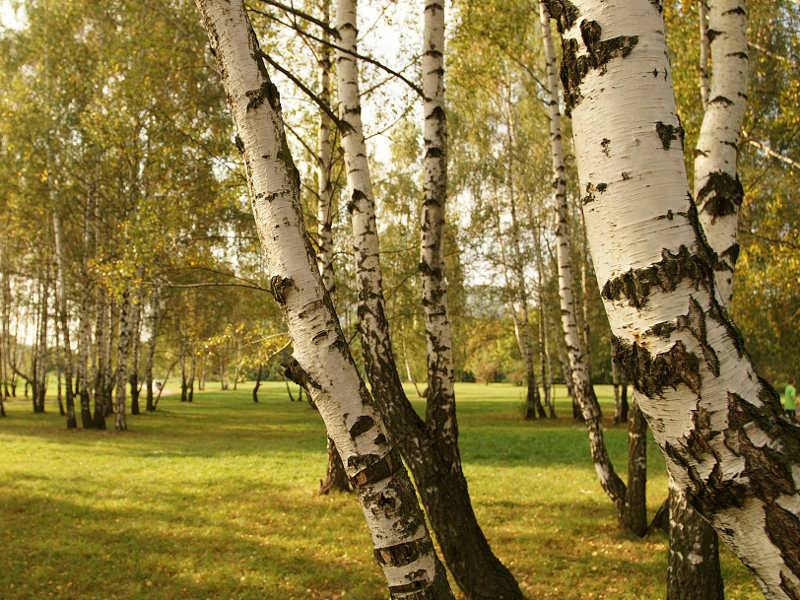
Types of birch trees, names and photos.
Due to polymorphism, the exact number of species of birch trees is not established. However, most scientists are inclined to believe that there are more than 100 of them. There is no single classification, but the most successful is the division of the genus into four groups:
- Albae - includes birch trees with white and close to this shade of birch bark color.
- Costata - different ribbed stem and rough leaves due to protruding from the bottom of the vein.
- Acuminatae - large-leaved trees, grow in subtropical conditions.
- Nanae - includes all stunted birch with small leaves.
Below are several types of birch trees:
(lat.Betula pubescens)
A tree with a height of 15–25 m has a trunk diameter of up to 80 cm. Young trees, which are often confused with alder, have red-brown bark, which in time acquires a snow-white color. The crown of a young birch is narrow, slender, becomes wide and spreading with age, with upward directed branches. Fluffy birch grows in Siberian forests, in the European part of Russia, in Western Europe and in the Caucasus. Winter-hardy, shade-tolerant, does not need much sun. Prefers well-moistened soils, feels great on wetlands.

Hanging birch(warty) (lat. Betula pendula)
The most common type of birch trees grows up to 25-30 m and has a trunk diameter of 75-80 cm. Young trees have brown bark that turns white by 10 years. The lower part of the trunks of old trees is blackened and covered with deep cracks. Birch branches are covered with a scattering of a number of resinous formations resembling warts, hence the popular name of the species is wart birch. Branches of young stock hang down characteristically, which is why birch is often called hung. It grows throughout Europe, in North Africa and Asia. The most extensive range from the Ural Mountains to Kazakhstan. The variety is frost-resistant, easily tolerates drought, but is picky about the sun.

Birch Erman(stone) (lat. Betula ermanii)
Stone birch received its official name in honor of German physicist and traveler Georg Adolf Erman. Among birch trees it is considered a long-liver, some trees can live up to 400 years. With a relatively low growth of 12-15 m, Hermann's birch has a diameter of usually curved trunk up to 90 cm. The bark is brown or dark gray, peeling, covered with age by deep cracks. The branches are erect, with young trees warty and pubescent, form a very beautiful, wide, translucent crown. Type of cold-resistant, shade-tolerant, unpretentious, grows well on stony land. Excess moisture tolerates poorly, on swampy soils, it is replaced by fluffy birch. It grows in Buryatia, Yakutia, the Far East, China, Japan and Korea.
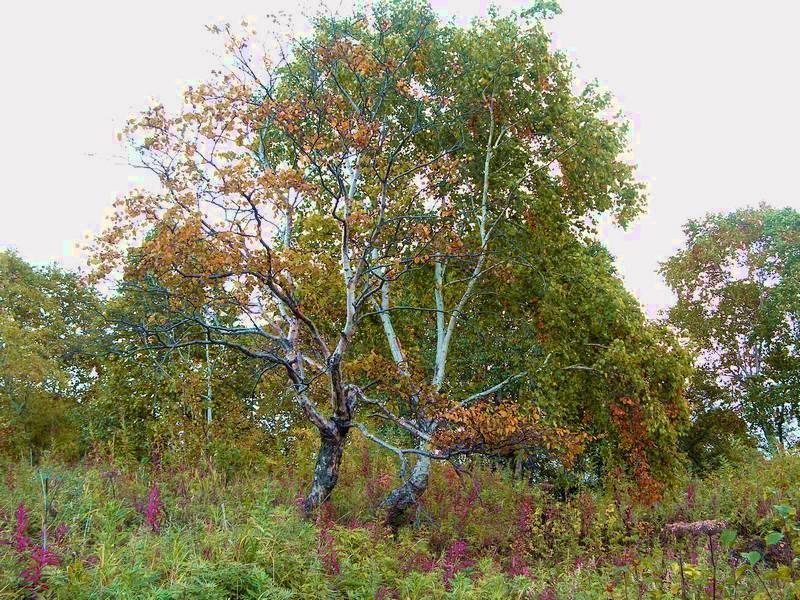
Cherry birch(lat, sweet) (lat. Betula lenta)
The tree is of medium size, 20-25 m in height, the trunk diameter is up to 60 cm. The crown of young pyramidal forms is rounded, transparent with hanging branches with age. Cherry birch is characterized by uneven, dark brown, almost cherry bark, covered with pronounced cracks. The bark of young trees has a spicy, fragrant smell. This birch grows quickly, preferring well-drained, light and moist soils, is considered long-lived. Possessing moderate winter hardiness, it often freezes in severe winters. Due to the heightened demands on the growing conditions, it never becomes the dominant plant. The homeland of cherry birch is North America, from Maine to the southern slopes of the Appalachians. It grows well in the Baltic countries, Belarus, is found in the Central Black Earth region of Russia.
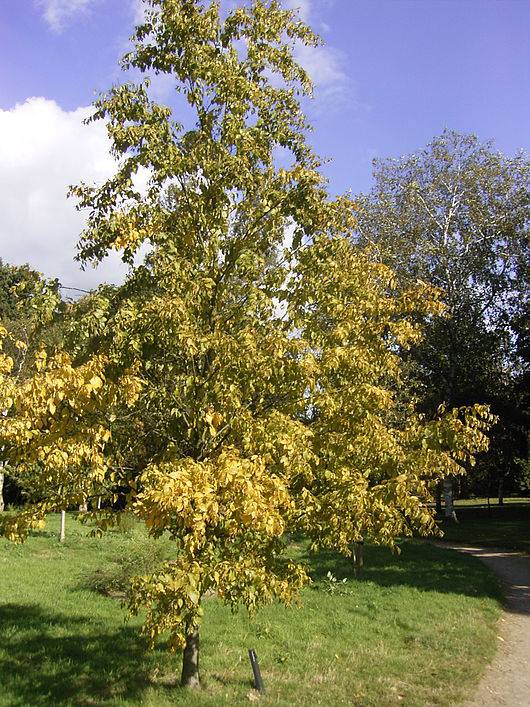
Black birch(river) (lat. Betula nigra)
The most thermophilic species of birch trees is up to 30 m in height and with a trunk diameter of more than 1 m. The openwork crown of wild-growing trees is formed by leaves of an oval or ovoid shape, dark green above and whitish or gray below. The bark of the trees can be rough, gray or brown in color, and sometimes smooth and even birch trees with creamy pink bark flaking like paper can be found. Thermophilous species of birch trees, widely distributed in the United States from New Hampshire to Texas and Florida.
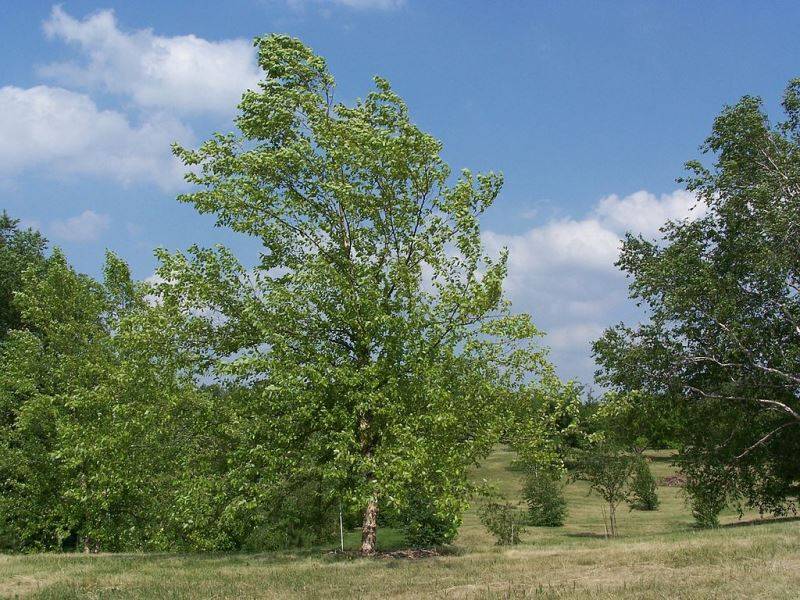
Dwarf birch (small, dwarf) (lat.Betula nana)
This type of birch grows in the tundra, in the highlands, is found on the plains. It resembles a shrub with a strong branching or is a low tree, the trunk of which is surrounded by warty branches. Bark of a birch of a dark-brown shade, young escapes densely pubescent. For growth prefers acidic or slightly acidic soil, perfectly tolerates heavy, overmoistened soils.
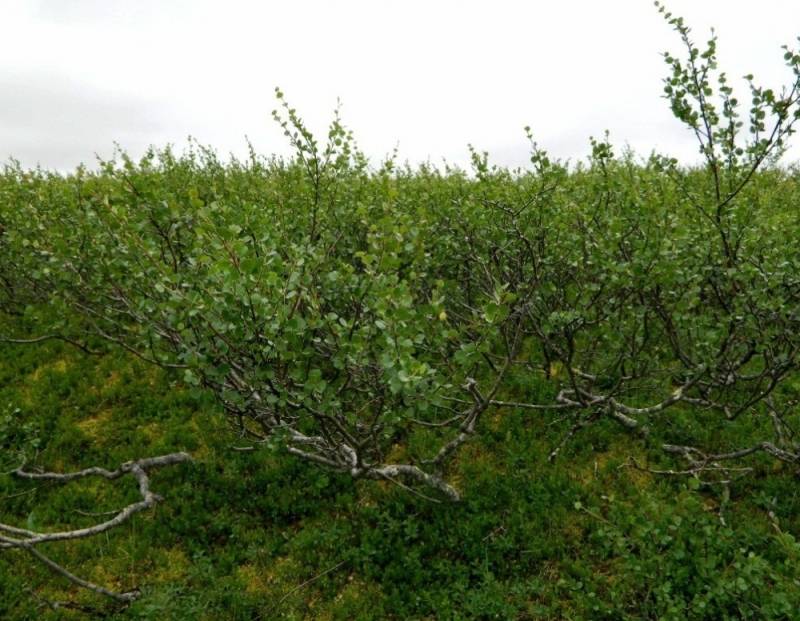
Karelian birch (LatinBetula carelica)
This type of birch trees can reach a decent height of 5-8 m, but often has the shape of a small bush. The trunk of a birch-karelka is often covered with numerous irregularities (tubercles or swellings), and is distinguished by an unusual pattern resembling the veins of marble. The wood of Karelian birch is very much appreciated in the exclusive furniture industry, and cabinetmakers make luxurious handicrafts from it.

 magicov.ru Secrets of magic.
magicov.ru Secrets of magic.


